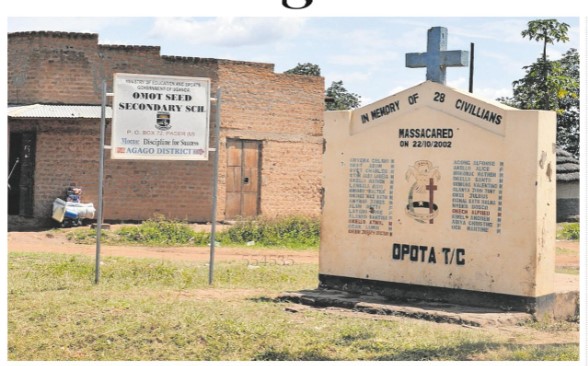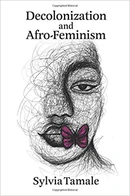Tourism sites in north left with no sights and sounds

Members of Parliament from northern Uganda have tasked the government to fast-track the gazettement and development of key monuments and cultural heritage sites as an ingredient to spur the economic development of the region.
Mr Tom Alero Aza, the West Moyo MP, said the region continues to miss significant development opportunities resulting from the limited attention the government pays to developing tourism sites.
“When we do not invest enough in tourism, we shall leave the potentials of tourism untapped and that means we shall be exposing ourselves to borrowing in perpetuity,” he said.
Mr Alero added: “We have not invested enough, funds must be increased, and roads and accommodation amenities established in such areas. The Tourism ministry should consider investing in tourism more than they have been doing it.”
In Gulu District, Ms Betty Aol Ocan, the Gulu City Woman MP, said key tourism destinations in the sub-region, for example, Fort Patiko and Aruu Falls, remain isolated with inaccessible roads despite their potential.
“The road from Gulu City to Fort Patiko is in a very deplorable state just like the Aruu Falls. The government should hasten to develop these sites and the associated amenities otherwise we are missing out on opportunities that would propel the recovery of the region,” Ms Aol said.
The limited capital investment by the government to develop the monuments and memorial sites coupled with a severe lack of associated road infrastructure has curtailed the exploitation of the tourism potential that the sites possess.
Between August 13 and 15, the Parliament’s Sectorial Committee on Tourism, Trade, and Industry, assessed six different monuments and memorial sites across Acholi and Lango sub-regions to appraise the state of the tourist sites.
Among the sites they visited were Kabalega and Mwanga Monumental Site (Dokolo), Barlonyo Massacre Site (Lira), Mary Mother of the Church Shrine (Oyam), Abok Massacre Site (Oyam), Sir Samuel Baker's Fort, Patiko (Gulu), and Amuru Hot Springs (Amuru).
The committee established the inadequacy of key tourism infrastructure to support, boost and sustain tourism at the sites. They found that roads were impassable to the sites and inhibited movement of tourists.
All the assessed sites had no significant impressive features to welcome tourists except Mary Mother of the Church Shrine. For example, the Barlonyo Massacre Site and the Abok Massacre Site did not have graphic images, artefacts, and expressions that would depict the the massacre.
While some sites are said not to be connected to national utility services like water, electricity and toilets, there is said to be a general lack of documented literature on the history of each tourist site.
According to the Ministry of Tourism, Wildlife and Antiquities, all the assessed sites are considered unfunded priorities except Kabalega/Mwanga Cultural Heritage Site which received Shs3 billion of the budgeted Shs14 billion for the Financial Year 2024/2025.
Budget gaps
The total budgetary needs for the unfunded sites are said to be Shs44 billion out of a total of Shs47 billion.
Fort Patiko (Shs12b), Barlonyo Massacre Site (Shs4b), Amuru Hot Springs (Shs10b), Mary Mother of the Church Shrine, Iceme (Shs2b), Abok Massacre Site (Shs1b), and maintenance of the sites (Shs4b).
Upon completion, Kabalega/Mwanga Cultural Heritage Site, Dokolo, would be one of the first cultural museums in Uganda that showcases the history of traditional kings who resisted British rule in an attempt to reclaim and preserve the sovereignty of African monarchies.
The site, sitting on 37.3 acres of land, has two monuments erected to symbolise and memorise the spot where the Omukama Kabalega of Bunyoro-Kitara kingdom and Kabaka Mwanga of Buganda Kingdom were arrested by the imperial British colonialists with assistance from Ssemei Kakungulu in April 1899.
The allocated Shs3b of the Shs14b required for the entire project, is meant for preliminary feasibility study designs, environmental impact assessments and construction of the site on which currently no activities take place.
In Gulu’s neighbouring Omoro District, Odek Bridge on the Moroto road, a key tourism road linking Odek Hills, Barlonyo Massacre Site and Paimol Pilgrimage sites, is five rains away from being washed away.
Mr Andrew Ojok Oulanyah, the Omoro County MP, said: “I want to draw the attention of the government on fast-tracking the rehabilitation of that road, besides being a tourism road, once washed away, it’s the only facility linking Omoro to its neighbours district (Gulu, Pader, Kitgum, Lira, and Oyam).”
In their report tabled before Parliament sitting in Gulu City last week, the committee also observed that some tourist sites visited did not have modern state-of-the-art facilities, sculpture gardens/yards (artefacts) and information necessary to stimulate visitor experience.
“The Barlonyo Massacre Site, Abok Massacre Site and Sir Samuel Baker's Fort in Patiko should at the least have captivating graphic expressions and images to depict incidents that happened at the Sites,” the report states.
“Abok Massacre Site is one of the sites in the Lango Sub-region of Northern Uganda that shouldered the brunt of war expeditions of the rebels of the Lord's Resistance Army (LRA) that happened between July 1, 2002 and December 31, 2005, causing untold suffering of the resident communities, worth developing,” Mr Bonniface Okot, the committee chair, told the House.
On June 8, 2004, a group of 100 LRA rebels led by Dominic Ongwen, attacked the camp that hosted more than 4,000 people and killed 28 people, including five children. The rebels were also reported to have abducted 26 people and burnt down 600 huts.
In the case of the Sir Samuel Baker's Fort located in Patiko Sub-county, Gulu District, the site designs were in place and feasibility studies were passed by the Ministry of Finance, Planning and Economic Development with an estimated project cost of Shs50b, Mr Okot said.
Whereas the Catholic Church is currently struggling on its own to maintain the shrine, Ms Alum said a significant Barlonyo Massacre Site is left to waste at the moment due to a lack of support facilities.
“On the Barlonyo, the management is poor, the road is poor, a journey of 20km takes more than 1.5 hours to reach, and this means we are not serious about generating local revenues and developing these sites.”
Ms Alum added: “There is no toilet there yet it hosts many people, the locals are struggling to communicate but no graphic images or pictures. There is a lot of vandalism taking place there and instead of government funding only one site in a year, nothing is being done.”
Limited resources
Meanwhile, Mr Martin Mugarra Bahinduka, the State Minister for Tourism, admitted the terrible state of tourism sites in the north but blames it on the financial limitations the ministry continues to face.
“Of the 19 (key tourism) sites in the north, we are only in charge of nine and the reasons are mainly because of resources, we have identified so many sites, our issues are on resources to develop and promote each of these sites,” Mr Mugarra says.
According to Mr Mugarra, there are still more tourism sites to be gazette for future development in the region.
“Under the Museums and Monuments Act, the minister has got powers to gazette any other sites that you feel would form part of the department, and our request also gets back to the government that more resources are put into tourism because tourism brings in a lot of revenue.”
To bridge this gap, the MPs recommended in the report that Uganda should adopt strategic measures to enhance revenue generation, including innovative marketing, infrastructure development and visitor experience improvement.
“Ministry of Tourism, Wildlife and Antiquities should, in collaboration with key stakeholders, take deliberate measures to budget for the development and improvement of key infrastructure with the view of boosting tourism at the sites. The Ministry of Tourism, Wildlife and Antiquities should champion inter-ministerial collaboration for the development of key infrastructures at the Sites under the Tourism Development Programme,’’ the report said.
The leaders also want the government to provide an enabling environment to support community-led tourism and train human resource in communities.









0 Comments